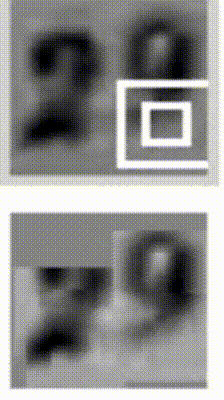Recurrent Neural Networks, LSTM, GRU
Refer to :
The Unreasonable Effectiveness of Recurrent Neural Networks
Recurrent Neural Networks
Sequences. Depending on your background you might be wondering: What makes Recurrent Networks so special? A glaring limitation of Vanilla Neural Networks (and also Convolutional Networks) is that their API is too constrained: they accept a fixed-sized vector as input (e.g. an image) and produce a fixed-sized vector as output (e.g. probabilities of different classes). Not only that: These models perform this mapping using a fixed amount of computational steps (e.g. the number of layers in the model). The core reason that recurrent nets are more exciting is that they allow us to operate over sequences
 Each rectangle is a vector and arrows represent functions (e.g. matrix multiply). Input vectors are in red, output vectors are in blue and green vectors hold the RNN‘s state (more on this soon). From left to right: (1)
Each rectangle is a vector and arrows represent functions (e.g. matrix multiply). Input vectors are in red, output vectors are in blue and green vectors hold the RNN‘s state (more on this soon). From left to right: (1)As you might expect, the sequence regime of operation is much more powerful compared to fixed networks that are doomed from the get-go by a fixed number of computational steps, and hence also much more appealing for those of us who aspire to build more intelligent systems. Moreover, as we’ll see in a bit, RNNs combine the input vector with their state vector with a fixed (but learned) function to produce a new state vector. This can in programming terms be interpreted as running a fixed program with certain inputs and some internal variables. Viewed this way, RNNs essentially describe programs. In fact, it is known that RNNs are Turing-Complete in the sense that they can to simulate arbitrary programs (with proper weights). But similar to universal approximation theorems for neural nets you shouldn’t read too much into this. In fact, forget I said anything.
If training vanilla neural nets is optimization over functions, training recurrent nets is optimization over programs.
Sequential processing in absence of sequences. You might be thinking that having sequences as inputs or outputs could be relatively rare, but an important point to realize is that even if your inputs/outputs are fixed vectors, it is still possible to use this powerful formalism to process them in a sequential manner. For instance, the figure below shows results from two very nice papers from DeepMind. On the left, an algorithm learns a recurrent network policy that steers its attention around an image; In particular, it learns to read out house numbers from left to right (Ba et al.). On the right, a recurrent network generates images of digits by learning to sequentially add color to a canvas (Gregor et al.):

 Left: RNN learns to read house numbers. Right: RNN learns to paint house numbers.
Left: RNN learns to read house numbers. Right: RNN learns to paint house numbers.
The takeaway is that even if your data is not in form of sequences, you can still formulate and train powerful models that learn to process it sequentially. You’re learning stateful programs that process your fixed-sized data.
### Vanilla RNNs: only have hidden states and those hidden states serve as the memory for RNNs.
class RNN: # ... def step(self, x): # update the hidden state self.h = np.tanh(np.dot(self.W_hh, self.h) + np.dot(self.W_xh, x)) # compute the output vector y = np.dot(self.W_hy, self.h) return y

E.g: An example RNN with 4-dimensional input and output layers, and a hidden layer of 3 units (neurons). This diagram shows the activations in the forward pass when the RNN is fed the characters "hell" as input. The output layer contains confidences the RNN assigns for the next character (vocabulary is "h,e,l,o"); We want the green numbers to be high and red numbers to be low.
Refer to :
Difference between feedback RNN and LSTM/ GRU
LSTMs are often referred to as fancy RNNs. Vanilla RNNs do not have a cell state. They only have hidden states and those hidden states serve as the memory for RNNs.
Meanwhile, LSTM has both cell states and a hidden states. The cell state has the ability to remove or add information to the cell, regulated by "gates". And because of this "cell", in theory, LSTM should be able to handle the long-term dependency (in practice, it‘s difficult to do so.)
Recurrent Neural Networks, LSTM, GRU
